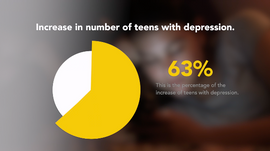Tackling Bullying Behaviors: Nonpunitive Approaches -3-Year Streaming
- SKU:
- CE-BVL-50208-3 Year Streaming
Bullying is an age-old problem that has been addressed in various ways over the years. This program offers detailed information on the principles of nonpunitive approaches to bullying, how to carry them out, and their advantages and disadvantages. The No Blame Approach," the Shared Concern Method, and Restorative Justice are all discussed, along with the role of parents and when punitive methods might be used. A viewable/printable worksheet is available online.
Length: 27 minutes
Item#: BVL50208
ISBN: 978-1-61753-534-5
Copyright date: ©2005
 Closed Captioned
Closed Captioned
Performance Rights
Prices include public performance rights.
Segments in this Video:
Need for Non-Punitive Options (01:02)
FREE PREVIEW
Punitive responses to bullying do little to change the culture in which bullying arises and can lead to retaliation against the victim. Non-punitive methods can help perpetrators understand the consequences of their actions.
Advantages of Non-Punitive Approach (04:15)
Punitive responses to bullying can lead to retaliation and be difficult to apply when bullying is subtle or details are unclear. Non-punitive approaches appeal to empathy. Punishment is necessary in cases of violence.
Objections to No Blame Approach (01:50)
Some object to the approach, because there is someone to blame for bullying. However, we want to help the bully, and accusations are not a good way to do this.
No Blame Approach (04:47)
With the victim's permission, the teacher holds a meeting to include bullies and sensitive kids to create empathy and work out solutions, leaving the meeting at a certain point so kids own the solution.
Method of Shared Concern (04:55)
Assuming bullying is based on groups, Shared Concern seeks to foster individual responsibility through individual discussion, and does not have conversations with the group or victim until the end of the process.
Restorative Justice (03:50)
Restorative justice views misconduct as a violation imposing a liability on perpetrators. It seeks to shame the perpetrator into a sense of remorse and obligation. It may anger the perpetrator, however.
Convincing Parents (03:42)
Emphasizing the need to protect a student helps persuade parents who regard non-punitive approaches as soft. The victimized student himself usually does not care about revenge. Punishment is still an option in case of failure.
Conclusion: Non-Punitive Approaches to Bullying (00:43)
Non-punitive approaches are often successful.
Credits: Tackling Bullying Behaviors: Non-Punitive Approaches (00:45)
Credits: Tackling Bullying Behaviors: Non-Punitive Approaches






